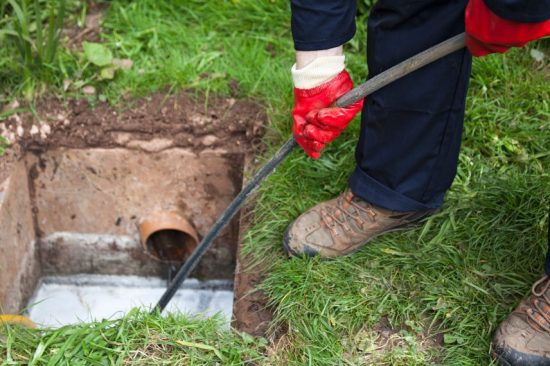Modern conveniences like plumbing can often go unnoticed. We take for granted turning on a tap, flushing a toilet, or letting water flow down a drain without much thought – until those actions meet with resistance or unpleasant backflows occur. The unseen hero in this narrative is the sewer line. Sometimes it requires help; one effective remedy for troubled sewer lines is rodding. Let’s dive deep into the world of sewer line rodding.
Introduction to Sewer Lines
Before we delve into the specifics of rodding, let’s first provide a brief introduction to sewer lines and explain their significance.
Sewer lines are underground pipes that transport wastewater from our homes to municipal sewage systems or private septic tanks for treatment and disposal. This wastewater includes everything from morning showers to dishwasher usage and the runoff from washing machines.
Common Sewer Line Problems

Unfortunately, sewer lines are susceptible to numerous issues that threaten their functionality. Some of them are-
Intrusive Tree Roots: In their search for moisture and nutrients, trees’ roots can penetrate sewer lines causing blockages or leakage.
Debris and Foreign Object Build-up: Over time, non-degradable items, grease, and other substances can accumulate, impeding the flow of water.
Natural Wear and Tear: Like any infrastructure, sewer lines deteriorate over time – cracks may form, leakages may happen, or collapses may even happen in older homes.
Defining Sewer Line Rodding
Sewer line rodding is a drain-cleaning plumbing technique used to clear blockage in sewer pipes or drainage systems. Rodding is a mechanical method used to clear blockages from sewer lines using long flexible rods that wind their way through sewer pipes while pushing or breaking any obstructions encountered on their journey.
The Step-by-Step Procedure For Sewer Line Rodding
Inspection: Before beginning rodding for sewer lines, professionals often utilize cameras to inspect the sewer line to identify its nature and location of blockages.
Entry Point Selection: Based on these inspection results, a suitable entry point for rodding will be chosen and determined accordingly.
Rod Insertion: Either manually or motorized rods are carefully introduced into the sewer line for use as obstruction removal devices. While in motion, they navigate along its length breaking apart obstructions or pushing them out of their path until complete removal occurs.
Rodding’s Versatility
Though rodding is best known for removing blockages, it can also be used for other purposes.
Routine Maintenance: Preventative rodding serves to monitor minor build-ups before they turn into major blockages and require routine rodding.
Tree Root Cutting: Tree roots that interfere with our lives may require cutting off using special blades attached to rods. Specialized cutting heads can be attached to these rods to cut away at them quickly.
Why Should You Consider Sewer Line Rodding
Sewer line rodding may appear complex at first, yet its versatility offers many advantages:
- Cost-Effective Solution
Rodding offers an economical option to effectively address blockages. In contrast to major sewer line repairs requiring excavation or replacing large sections of sewer lines, rodding offers an easier, less expensive option that addresses blockages effectively. - Rodding Is Fast and Minimally Invasive
One of the hallmarks of rodding is its rapidity; unlike some plumbing repairs, which may take days to complete, rodding typically completes within hours, causing minimal disruptions to daily life and routine. Traditional sewer line repairs involving excavation can wreak havoc on landscapes, driveways, and structures – but rodding offers an effective alternative that spares homeowners the added costs associated with post-repair restoration of their property. - Environmentally Friendly Approach
In an age where environmental concerns are becoming ever more prominent, rodding for sewer lines stands out as an environmentally friendly plumbing solution. While chemical drain cleaners may introduce harmful toxins into our water supply and threaten beneficial bacteria in septic systems, rodding uses only mechanical devices for its cleansing process.
The Do’s and Don’ts
For those considering sewer line rodding, here are some best practices:
Do’s:
Hire a Professional: While DIY solutions might seem more tempting, hiring a professional sewer repair plumber ensures the task is carried out safely and properly.
Schedule Regular Inspections: Regular home inspections can help identify potential issues before they escalate further.
Educate Your Household: Make sure that everyone in the household understands what shouldn’t go down drains, to reduce blockages.
Don’ts:
Avoid Ignoring Early Signs: Slow-draining sinks, gurgling noises, or unpleasant odors should all serve as warning signals; get them fixed as soon as possible.
Overusing Chemical Drain Cleaners: These can corrode pipes over time, leading to more serious issues.
Conclusion to Sewer Line Rodding
Sewer line rodding is an integral component of maintaining our plumbing systems’ health, offering quick, effective, and eco-friendly results. By understanding its significance and performing regular checks and maintenance checks on their sewer lines, homeowners can save both time and money over time. Remember, having an uninterrupted sewer flow is the foundation for living hassle-free lives!
Roto-Rooter is your trusted partner for any blocked sewer line troubles. Boasting a team of highly skilled plumbers, we’re equipped to address and resolve any plumbing-related challenges promptly and efficiently.
